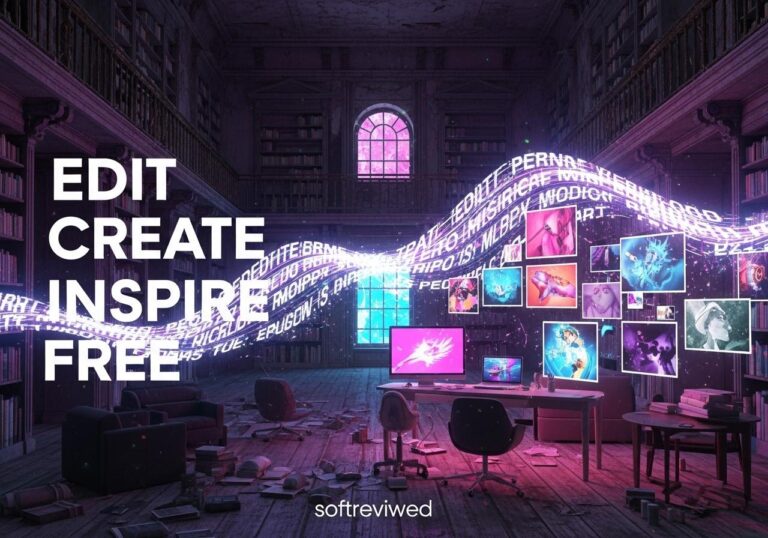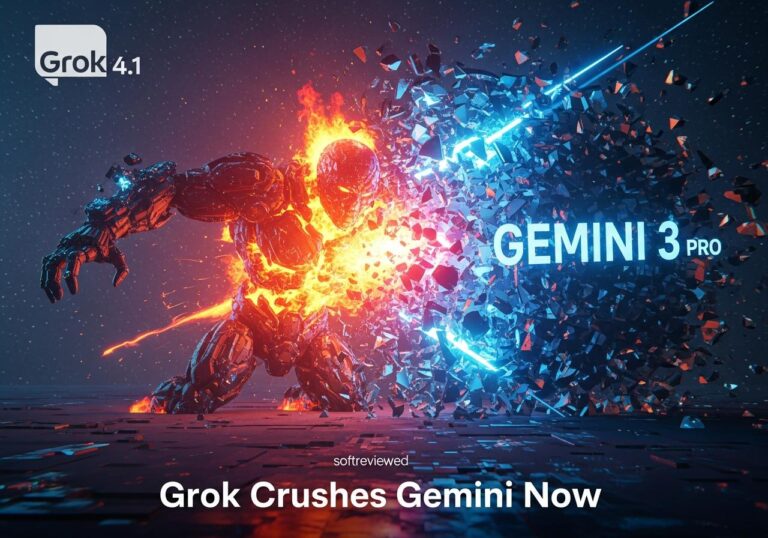🖼️ Qwen-Image-Edit: Advanced AI Image Editing
A powerful AI model that combines semantic and appearance editing capabilities for precise image manipulation
🧠 Advanced 20B Parameter Model
Built upon Qwen-Image’s 20B parameter foundation with Multimodal Diffusion Transformer (MMDiT) architecture, providing exceptional image understanding and manipulation capabilities.
🔤 Precise Bilingual Text Editing
Supports direct addition, deletion, and modification of Chinese and English text while preserving original font, size, and style for seamless text integration in images.
✏️ Dual Editing Capabilities
Combines semantic editing (style transfer, object rotation, IP creation) with appearance editing (adding/removing elements with pixel-perfect precision) for comprehensive image manipulation.
🏆 State-of-the-Art Performance
Achieves SOTA results across multiple public benchmarks for image editing tasks, demonstrating superior quality and precision compared to existing solutions.
🌐 Multi-Platform Availability
Accessible through Qwen Chat, ComfyUI native support, Hugging Face, and various API endpoints, making it versatile for different user needs and workflows.
🔄 Iterative Editing Workflow
Enables chained, step-by-step editing approach with bounding box controls for complex corrections and refinements, allowing for precise multi-stage image transformations.
Understanding Qwen Image Edit: Your Gateway to Effortless Photo Manipulation
The world of image editing has witnessed a seismic shift with the arrival of Qwen Image Edit, a groundbreaking AI tool that’s challenging established players in the creative software space. This innovative platform transforms the traditionally complex process of photo manipulation into simple, conversational requests.
Built on Alibaba’s powerful 20-billion-parameter Qwen-Image foundation model, this free tool represents a significant leap forward in AI-powered image editing. Unlike conventional editing software that demands extensive technical knowledge, Qwen Image Edit responds to natural language instructions, making professional-quality edits accessible to everyone.
The platform’s multimodal capabilities extend far beyond basic image manipulation. Users can process text, images, audio, and video simultaneously, creating a comprehensive creative workspace that adapts to diverse project requirements. This integration reflects the broader trend toward unified AI platforms that eliminate the need for multiple specialized tools.
Breaking Down the Dual-Path Architecture That Powers Superior Results
What sets Qwen Image Edit apart from competitors lies in its sophisticated dual-path architecture. This innovative design combines two distinct processing pathways to deliver unprecedented editing precision.
The semantic editing pathway leverages the Qwen 2.5-VL encoder to understand high-level conceptual changes. When you request to “change the character’s expression from sad to happy,” this pathway interprets the emotional transformation while preserving the character’s core identity. This approach ensures that complex edits maintain logical consistency across the entire image.
Simultaneously, the appearance editing pathway employs a Variational Autoencoder (VAE) to handle pixel-level modifications. This component manages precise visual changes like adding objects, modifying lighting conditions, or inserting text elements. The VAE ensures these additions seamlessly integrate with existing image elements, matching perspective, shadows, and color temperatures automatically.
This dual approach addresses a common weakness in traditional AI image editors: the tendency to either completely transform images or make changes that appear artificially imposed. Qwen’s architecture maintains the delicate balance between creative flexibility and visual authenticity.
Character Consistency: The Game-Changer for Content Creators

One of Qwen Image Edit’s most celebrated features is its exceptional character consistency capabilities. This functionality addresses a persistent challenge in AI image generation: maintaining identical character appearance across multiple edits and variations.
The platform excels at preserving facial features, clothing details, and distinctive characteristics even through extensive modification sessions. Content creators can generate multiple poses, expressions, and scenarios featuring the same character without experiencing the “character drift” common in other AI tools.
This consistency proves invaluable for various applications. Social media managers can create cohesive brand mascot variations, while storytellers can develop consistent character appearances across different scenes. Game developers benefit from generating diverse character poses while maintaining visual continuity throughout their projects.
The technology handles both subtle adjustments and dramatic transformations equally well. Whether changing a character’s hair color, adding accessories, or completely altering the background setting, the core character identity remains remarkably stable.
Precision Text Editing: Bridging Language Barriers with Style
Qwen Image Edit’s bilingual text editing capabilities represent a significant advancement in AI image processing. The platform can directly modify text within images while preserving original typography characteristics, including font family, size, style, and formatting.
This feature proves particularly valuable for international content creation. Marketing teams can adapt campaign materials across different markets without recreating entire designs. The AI accurately maintains text positioning, color schemes, and visual hierarchy while seamlessly translating content between English and Chinese.
The text editing functionality extends beyond simple replacement. Users can add new text elements that automatically match surrounding typography characteristics. This capability eliminates the common issue of obviously artificial text additions that clash with original design elements.
Professional designers appreciate the tool’s ability to handle complex text layouts, including curved text, stylized fonts, and intricate positioning. The AI respects existing design principles while implementing requested changes, resulting in polished, professional-looking outputs.
Comparing Performance: Qwen vs Flux Kontext and Industry Leaders
Recent comparative analyses reveal significant differences between Qwen Image Edit and its primary competitor, Flux Kontext. Community testing consistently favors Qwen’s output quality and reliability, particularly in character consistency and text processing tasks.
Output Quality and Speed Analysis
Independent users report mixed results regarding processing speed. While Flux Kontext processes images in approximately 40 seconds on high-end hardware like RTX 4090 systems, Qwen Image Edit typically requires 55 seconds for comparable operations. However, this modest speed difference is offset by superior output quality and fewer failed generation attempts.
Feature Comparison Matrix
| Feature | Qwen Image Edit | Flux Kontext |
|---|---|---|
| Text Editing | Bilingual precision editing | Basic text processing |
| Character Consistency | Strong preservation across edits | Standard performance |
| License | Apache 2.0 (fully open) | Restrictive commercial terms |
| Multi-turn Editing | Stable through multiple sessions | Quality degradation after 6+ edits |
| Cost Structure | Free access available | Requires paid subscriptions |
Testing across various editing scenarios demonstrates Qwen’s advantages in complex tasks. The platform handles character modifications, scene changes, and text additions more reliably than Flux Kontext. Users report fewer instances of completely failed generations and better adherence to specific prompt requirements.
Multimodal Capabilities: Beyond Image Editing
Qwen’s comprehensive multimodal approach distinguishes it from single-purpose editing tools. The platform processes various content types within a unified interface, enabling complex creative workflows that traditionally required multiple applications.
Audio and Video Integration
The platform’s audio processing capabilities support transcription services and voice-based interactions. Content creators can upload videos for analysis, extract key frames for editing, and generate accompanying visual materials. This integration streamlines multimedia content production workflows.
Document Processing and Web Search
Users benefit from integrated document processing and web search functionality. Research tasks, reference gathering, and content verification can occur within the same interface used for image editing. This approach reduces context switching and maintains creative momentum during complex projects.
API Integration and Development Support
Developers can access Qwen’s capabilities through comprehensive APIs. The platform supports both HTTP requests and SDK integration in Python and Java, making it suitable for custom application development. This flexibility enables businesses to integrate Qwen’s capabilities into existing workflows and proprietary systems.
Accessibility and Cost Advantages: Democratizing Professional Editing
Qwen Image Edit’s free access model represents a significant shift in professional image editing accessibility. Unlike traditional software requiring expensive licenses or subscription fees, Qwen provides advanced editing capabilities without financial barriers.
Open Source Benefits
The Apache 2.0 licensing allows unlimited commercial use without restrictive terms. Small businesses, independent creators, and students can access professional-grade editing tools without budget constraints. This accessibility democratizes high-quality visual content creation across economic boundaries.
Learning Curve Considerations
The platform’s natural language interface eliminates the steep learning curves associated with traditional editing software. Users can achieve professional results without mastering complex tool panels, layer systems, or technical workflows. This simplicity enables rapid skill development and creative experimentation.
Infrastructure and Deployment
Organizations can deploy Qwen locally or through cloud services, providing flexibility in data handling and processing requirements. This approach addresses privacy concerns while maintaining performance standards suitable for professional applications.
Practical Applications Across Industries
Qwen Image Edit’s versatility supports diverse professional applications. Marketing departments leverage the platform for rapid campaign asset generation, while educational institutions use it for creating consistent instructional materials.
Commercial Design Applications
Design studios utilize Qwen for product poster modifications, brand identity adjustments, and multi-language localization projects. The platform’s text editing capabilities streamline international marketing campaigns, allowing rapid adaptation of visual materials across different markets and languages.
Content Creation Workflows
Social media managers benefit from character consistency features when developing branded content series. The ability to generate multiple variations of branded characters or mascots while maintaining visual continuity supports cohesive marketing strategies across various platforms and campaigns.
Educational and Training Materials
Educational content creators use Qwen for developing consistent visual narratives. The platform’s ability to maintain character identity across different scenarios supports storytelling applications, from children’s book illustrations to technical training materials.
Current Limitations and Future Development Trajectory
Despite its impressive capabilities, Qwen Image Edit faces certain constraints. Excessive multi-turn editing sessions can occasionally introduce visual artifacts, though this limitation affects most AI editing platforms to varying degrees.
Performance Considerations
The platform occasionally struggles with extremely complex scene understanding or ambiguous instructions. Users achieve optimal results by providing clear, specific editing requests rather than vague or overly complex modifications.
Technical Constraints
Current processing limitations include maximum image sizes and prompt length restrictions. The platform supports images up to specific resolution limits and processes prompts within defined token boundaries, though these constraints rarely impact typical use cases.
Development Roadmap Expectations
Based on current trends in AI development, future versions will likely address existing limitations while expanding capability boundaries. Expected improvements include enhanced processing speed, extended context handling, and more sophisticated understanding of complex editing requests.
Getting Started: Your First Steps with Qwen Image Edit
Beginning with Qwen Image Edit requires minimal setup compared to traditional editing software. Users can access the platform through chat.qwen.ai and immediately begin experimenting with editing capabilities.
Initial Setup and Interface Navigation
The web-based interface eliminates installation requirements while providing immediate access to all features. New users can upload images directly through the browser and begin issuing editing commands using natural language descriptions.
Optimization Strategies for Best Results
Successful Qwen usage follows specific best practices. Clear, specific instructions yield superior results compared to vague requests. Users should describe desired changes in detail, including spatial relationships, color specifications, and style preferences when applicable.
Integration with Existing Workflows
Content creators can incorporate Qwen into existing production pipelines through API access or direct web interface usage. The platform’s export capabilities support various file formats and quality settings, ensuring compatibility with downstream processing requirements.
Transforming Creative Possibilities Through AI Innovation
Qwen Image Edit represents more than technological advancement; it embodies a fundamental shift toward accessible, intelligent creative tools. By combining sophisticated AI capabilities with intuitive interfaces, the platform enables unprecedented creative expression without traditional technical barriers.
The tool’s success demonstrates the potential for AI to enhance human creativity rather than replace it. Professional designers, casual users, and everyone in between can leverage these capabilities to bring their visual ideas to life more efficiently and effectively than ever before.
As AI image editing continues evolving, Qwen Image Edit positions itself as a catalyst for this transformation. Its combination of advanced features, accessibility, and cost-effectiveness suggests a future where professional-quality image editing becomes available to anyone with creative vision, regardless of technical background or financial resources.







